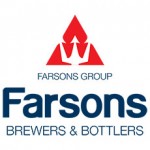The environment and heritage NGOs Archaeological Society Malta, Flimkien għal Ambjent Aħjar, Friends of the Earth Malta, GAIA Foundation, Moviment Ħarsien Ħondoq and Ramblers Association maintain that the credibility of the Eco-Gozo campaign hangs in the balance as the Qala Creek project to build a hotel, approximately 250 residences and a yacht marina in the Hondoq hillside is assessed. The approved Gozo and Comino Local Plan proposes the Hondoq ir-Rummien area as a Site of Ecological Importance, a Site of Scientific importance for its geology, an Area of Ecological Importance and as a Category ‘A’ valley. It is moreover a proposed Area of High Landscape Value (AHLV) which imposes the tightest restrictions against residential, commercial or tourism development, including roads and public utility services.
In reviewing the project’s Environment Impact Assessment (EIA) MEPA’s Natural Heritage Advisory Committee (CHAC) states unequivocally “Excavation and construction will obliterate plants and sedentary or slow-moving fauna within the development footprint…This impact is irreversible and extends throughout the proposed footprint”
The project’s impacts on the marine environment are equally significant: “obliteration of habitats as the creation of permanent structures such as sea walls, moorings, anchoring blocks and jetties will permanently obliterate all present marine habitats in the area where these marine constructions will be located”.
The release of dust due to excavation and dredging works to create the marina is expected to have an adverse effect on the water, seabed, fauna and flora out to at least 1000m and to have a “major” impact on highly sensitive, protected Posidonia beds in the area.
Furthermore, the NHAC highlights the fact that the Local Plan indicates that within the boundaries of the Hondoq ir-Rummien zone development for tourism and marine related uses, should focus on sensitively designed, high quality and low density buildings that blend into the landscape. This certainly does not describe the proposed project, to be built up to seven storeys up the hillside.
The lack of solar energy use, combined with the NHAC’s serious reservations about the project’s reverse osmosis plant, drains and sewage treatment further question the environmental sustainability of the project.
In its report, the Archaeological Society of Malta identified a number of archaeological sites in the area, indicating that much more may be found underground.
The NGOs are seriously concerned about the impact of the project on the residents of Qala, 85% of whom had voted against the project. In 2002, a MEPA air pollution study found Qala to be twice as polluted as Sliema, mainly due to heavy vehicle traffic to the nearby hardstone quarry. Once operational, this project would generate approx 2,000 extra vehicles per day transporting tourists, employees and supplies through the narrow village streets. The NGOs condemn the fact that the EIA is being presented with no revision to the Transport Impact Statement which was found to be inadequate, since it studied points which were closer to other villages than to Qala.
The environment groups also object to the project due to the fact that past MEPA surveys on Gozo yacht marinas eliminated Qala as a potential site due to its pristine waters. Although the developers insist that the sandy beach will not be touched, their own scientific report clearly states that Hondoq Bay will definitely be affected also by the release of the anti-fouling compound tri-butyl tin.
While conscious of the need to create employment in the tourism sector, the NGOs question whether this project will in fact achieve this in significant numbers since other tourist establishments in Gozo are resorting to low-wage foreign labour. Much of the project is planned as multi-ownership units which would attract Maltese buyers but would generate fewer employment opportunities.
The present neglect of the area should not justify a speculative project. The NGOs highlight the fact that prior to 2002, the land was designated as a national park; in fact the dumping was approved by the Qala Council as infill to start implementing the park plans.
The proposed development of a port, hotel, yacht marina and tourist village would change the character and very nature of this area; the present peace and quiet which are the main attraction of Hondoq ir-Rummien will be totally destroyed with the coming and going of yachts and the heavy traffic to be generated.. With Marsalforn and Xlendi already ruined by speculative development, Gozo needs to protect its quiet, rural character which is what draws tourists to the island. It is not just Hondoq ir-Rummien that will suffer with approval of this project, but the whole of Gozo. Not only will the marina sacrifice circa 10,000m2 of precious limited land to the sea, but once approved, the project could trigger a string of developments which would devour the whole eastern coast of Gozo.
The NGOs maintain that the best use of this area would be its integration into a wider context of maritime, cultural and agricultural landscapes, combining a natural park planted with local trees, organic farming, a heritage trail to include bicycle tracks and pathways connecting to the fort at Ras il-Qala, rock climbing and an open air theatre. With the reinstatement of the watercourse, a managed beach offering barbeque stations, the provision of car-free transport and facilities integrated into the landscape, a holistic project would attract more tourists year-round than yet another speculative project.
Such a project as proposed by the University architecture students in the FAA/University/Qala Council award would result in a win-win situation for the residents of Qala who would continue to enjoy the area. It is also economically feasible – the MEPA Natural Heritage Committee remarked that the EIA “completely put aside the fact that both mineral extraction and infilling generate a substantial amount of revenue. The Panel feels that this latter alternative has only been superficially explored, definitely not exhaustively and deserves further consideration.”
The Panel goes on to highlight the fact that “the Co-ordinator of the EIS has shown a certain bias in his remarks” and quotes subjective favourable remarks which are inappropriate to an EIA. The concluding title of the Non-Technical Summary “Yes to the Hondoq ir-Rummien Yacht Marina” is most inappropriate, as is the consultant’s recommendation of “a good public relations exercise when it comes to the visual impact of this project”. The NGOs ask what measures MEPA intends to take in view of such an obvious bias, especially in the light of the provisions of the reform of EIA procedures.
The Natural Heritage Committee concludes that the negative impacts of the project on the natural environment outweigh the positive aspects, particularly in respect of terrestrial and marine ecology, waste generation and disposal and visual impact. The Panel is therefore of the opinion that the proposed development cannot be recommended for approval.
Refusal of this project would permit Government to purchase the site at non-development rates and to convert the quarry into a national park as previously planned, attracting more tourists to Gozo allowing present and future generations to enjoy the natural beauty and serenity of Hondoq ir-Rummien
The NGOs strongly support this recommendation – in a year dedicated to sustainability and biodiversity, approval of a project that obliterates habitats and proposes large-scale building in the countryside with very negative effects on Qala village, would make a mockery of Eco-Gozo. The six NGOs therefore urge MEPA to refuse this project, standing by its Chairman’s recent words: ‘The Board takes decisions based on today’s planning policies and on the principle of sustainable development while making sure that permits are granted in the public interest.



